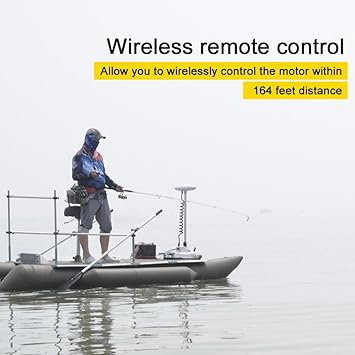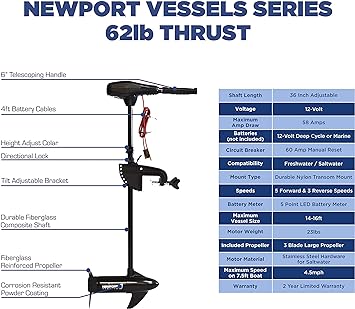Kayaks are a pretty costly investment. If you do have a kayak, you would want to make sure that it can’t be stolen easily.
Now, if you have an inflatable kayak, protecting it won’t be a problem. However, if you do have a hardshell kayak, you might be thinking of getting a lock for it.
A kayak lock is a must-have device if you happen to own a kayak. Not only does it protect your kayak from thieves, but it is also useful if you have to transfer your kayak from one place to another.
Securing your Kayak at Home
If you plan to store your kayak when at home, the best option would be to store it in a shed or garage. However, not many people have access to a garage or shed. So instead, you can store the kayak inside your home!
If you plan to keep the kayak inside your house for long periods, you can build a storage rack. Not only can you lock your kayak to this rack, but it also acts as a wonderful display for your kayak! Another option is to use a kayak hoist that suspends the kayak from your ceiling.
If you don’t like the idea of storing your kayak inside your house, you can safely secure it outside. You can build a wall mount or a rack on the exterior wall of your house. Then, with the help of cable locks or locking straps, you can safely secure it. Conversely, you can also use a tree or another permanent structure as an anchoring point for securing your kayak.
Securing your Kayak while Camping
If you are an avid kayaker, you probably like going on camping sessions to test new waters; securing your kayak while on a camping trip is easy. One of the best methods to securing your kayak is by locking it in your car’s roof rack. We have discussed this topic in detail below!
If you haven’t come by car or are traveling from one place to the other on your kayak, you need to look at other protection methods. With the help of cable locks, you can secure your kayak to a tree on your campsite. Apart from cable locks, you can use tough rope or locking straps as well.
Once you secure your kayak, you can hide it from thieves too. Gather a pile of leaves and branches to cover your kayak. Hiding a kayak in plain sight is an effective method to prevent your kayak from being stolen!
Securing your Kayak inside a Garage/Shed
One of the best ways to protect your kayak is by storing it inside your garage or shed. A garage is secure, and you can simply lock the door. You no longer have to worry about securely tying your kayak down.
The best part about garages and sheds is their small windows. Even if someone breaks into your garage, a huge hardshell kayak won’t fit through the tiny window.
Moreover, you can also store the kayak on a rack that converts it into a showpiece. Alternatively, if your garage doesn’t have enough space, you can use a kayak hoist and suspend the kayak from your ceiling! This aesthetic setup is secure and ensures that the kayak does not fall off easily.
Securing Inflatable Kayaks
Inflatable kayaks are a very popular choice amongst customers because of their portability. When you are not using it, you can simply deflate the kayak. Then, you can store it in a storage unit, your house, car, or garage. In addition, inflatable kayaks don’t require complex locking solutions.
However, inflating and deflating a kayak between every use can be an unwanted hassle. If you plan to use your kayak continuously for a couple of days, you might want to store it without deflating it. If so, you can simply lock the kayak using a cable lock. Just make sure that you use a solid anchor point for this job.
If you don’t own a cable lock, you can use a locking strap or simple rope. In such cases, make sure that your lock is tight. There shouldn’t be too much slack in the cable as it can be easily cut, making it easy for a thief to steal the kayak.
How to Lock Kayak to Roof Rack?
Kayaking is a very enjoyable hobby. The best part about owning a kayak is that you can take it to new places now and then. If you happen to travel frequently with your kayak, you might be looking at how to securely tie it to a roof rack.
One of the best methods to secure a kayak to your roof rack is by purchasing locking straps. Not only do they behave as great tie-downs, but you can also use them for locking your kayak! On the other hand, you can also purchase a simple cable lock. This device is useful if you have a sit-on-top style kayak. Moreover, they also work well with sit-inside kayaks.
Now that you know the type of lock to get, how exactly do you secure your kayak to a roof rack?
Step 1: Threading the cable through the kayak holes
The first step is to tie your kayak to the roof rack securely. To do so, you can thread the cable lock or locking strap through the scupper hole of your kayak. The scupper hole is usually located at the bow of your kayak.
Once you do this, you can thread the cable through the other scupper hole, which is usually situated at the stern of your kayak. However, some kayaks might not have a scupper hole. In such cases, you can drill these holes yourself!
Choosing the location for drilling a hole is not an easy task. Firstly, you must ensure that once you drill a hole, your kayak remains watertight. This means you cannot drill a hole into the hull of your kayak. Instead, you can drill a hole in the storage spaces of your kayak. Cup holders are also a perfect location to drill a scupper hole!
Step 2: Looping the cable
Once you have securely threaded the cable, you need to lock the cable together. For this process, you can bring the two loops together and tie them together with a cable lock or locking strap. You must tie them as tightly as possible. Also, you can use the help of tools to make the lock more secure.
If you don’t have a cable lock, you can use a half an inch thick rope for this process. Additionally, you should also ensure that you cut all the excess rope. After all, you wouldn’t want the excess rope to flop around in the wind and scare other drivers, right?
Step 3: Final Locking
The last step of locking the kayak to your roof rack is to carry out the final locking procedure. The two steps above primarily focus on strapping the kayak to your roof rack. Once those two steps are done, you have to ensure that your locks are tight and have the right tension.
However, you must also ensure that the locks aren’t too tight, as it can harm the structural integrity of the kayak. For example, kayaks made from fiberglass and composite materials might rupture if your locks are too tight.






